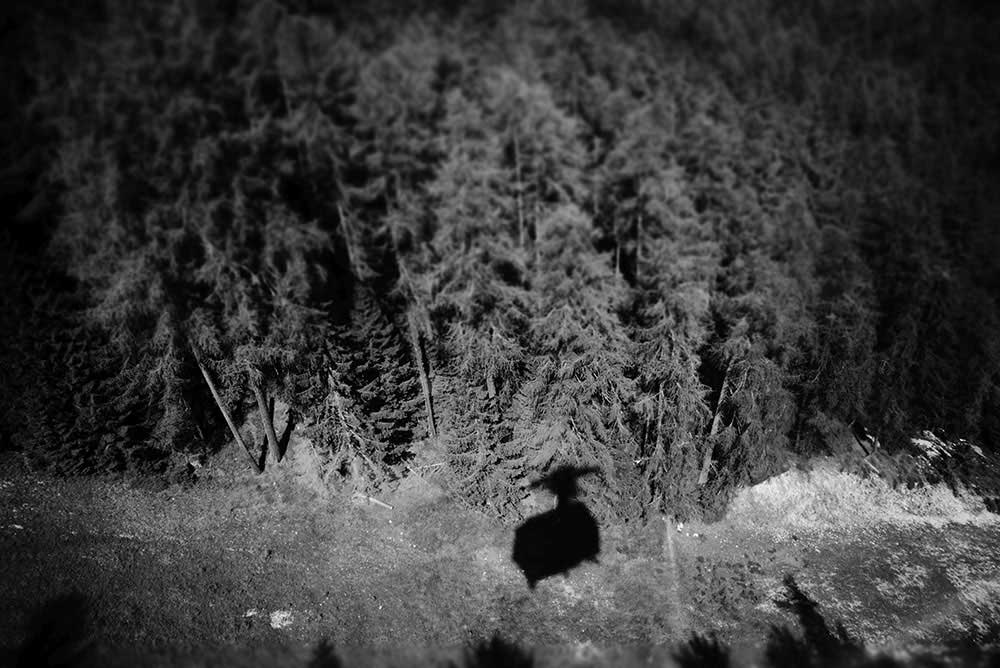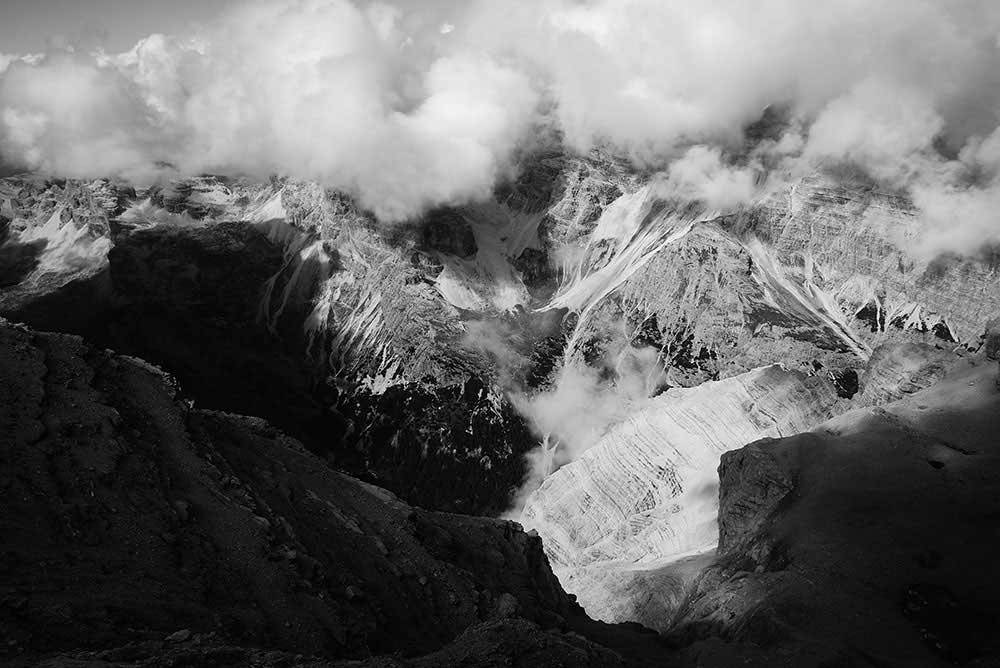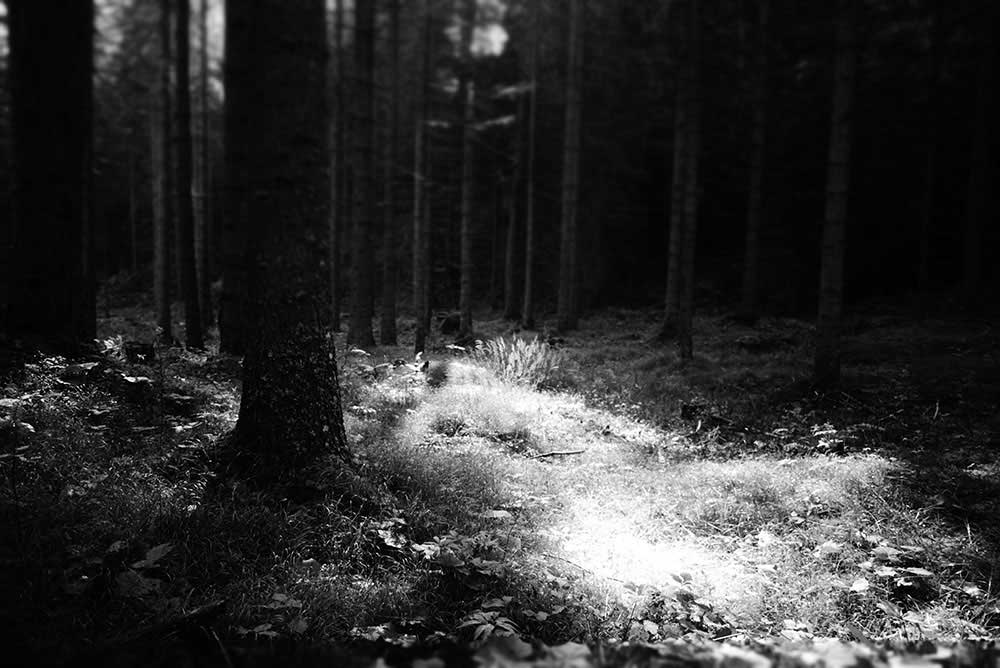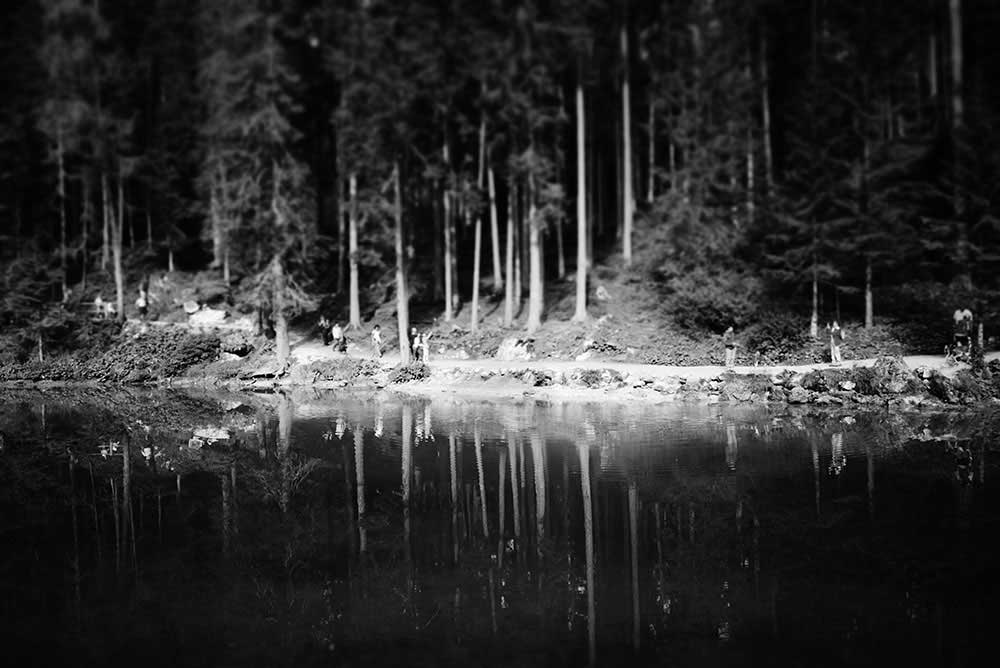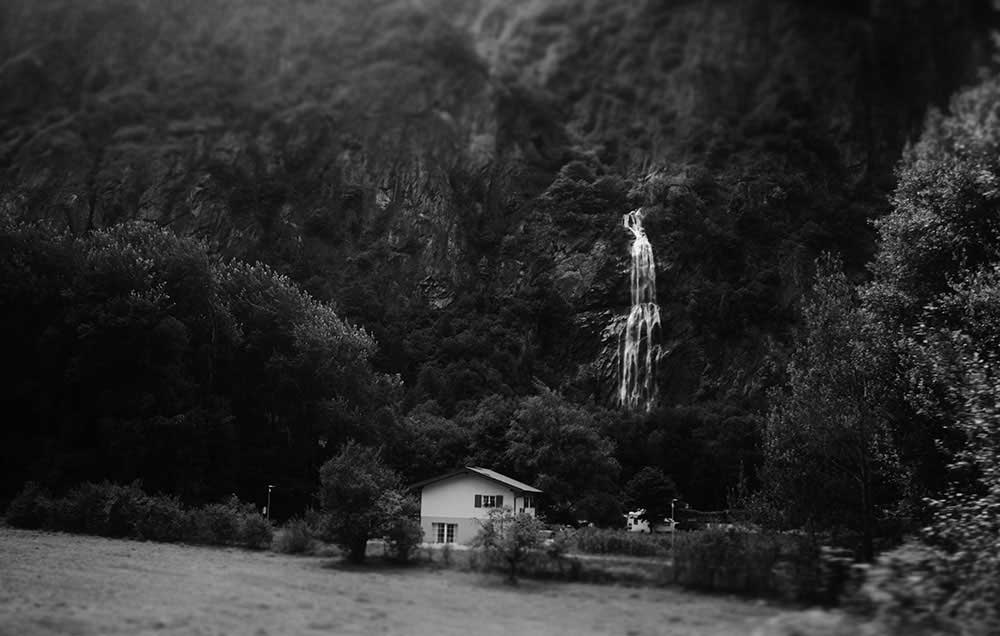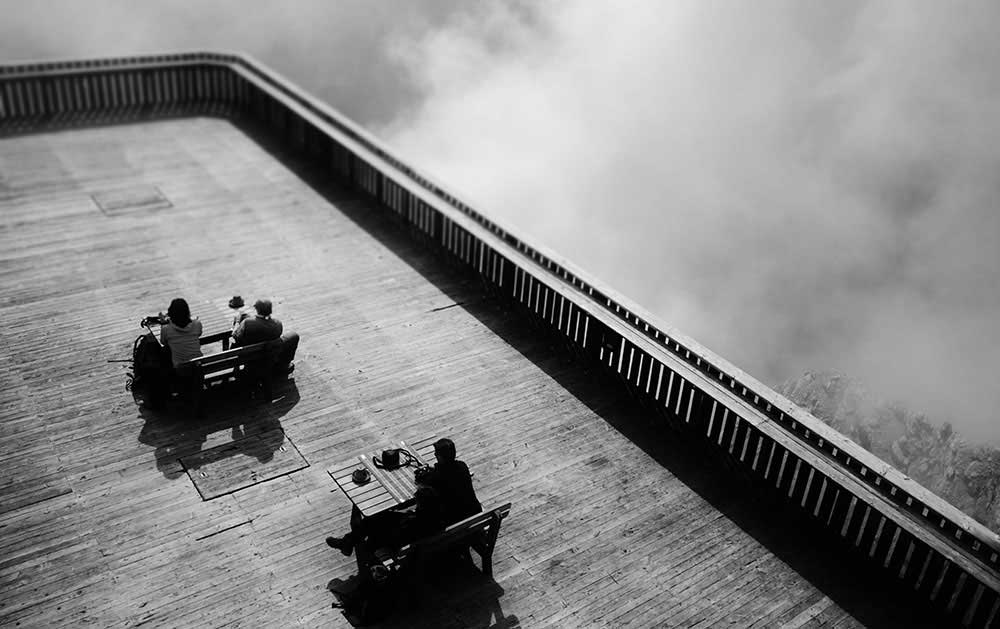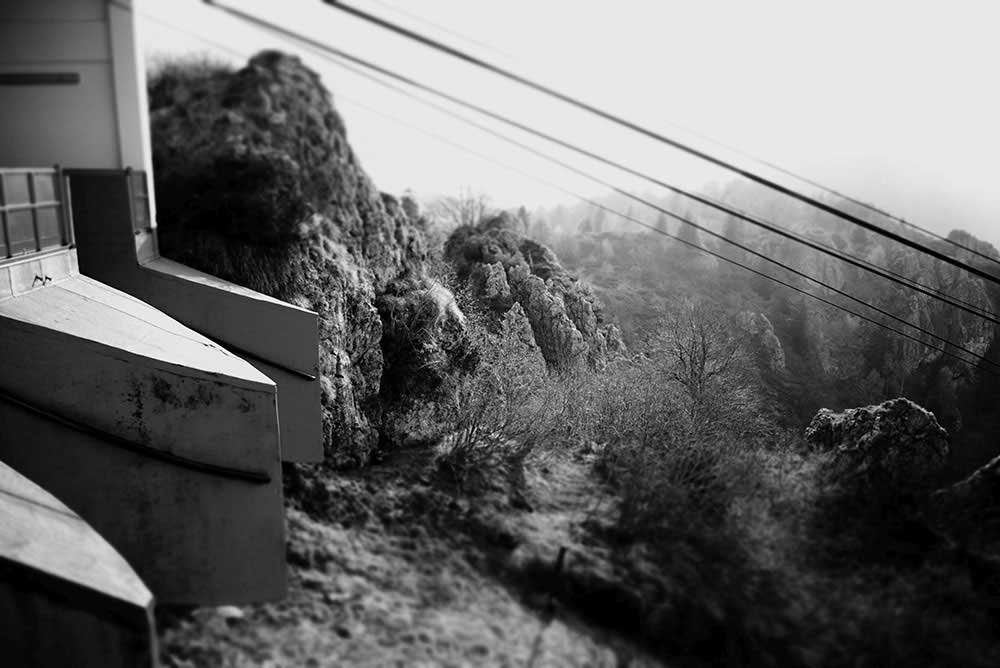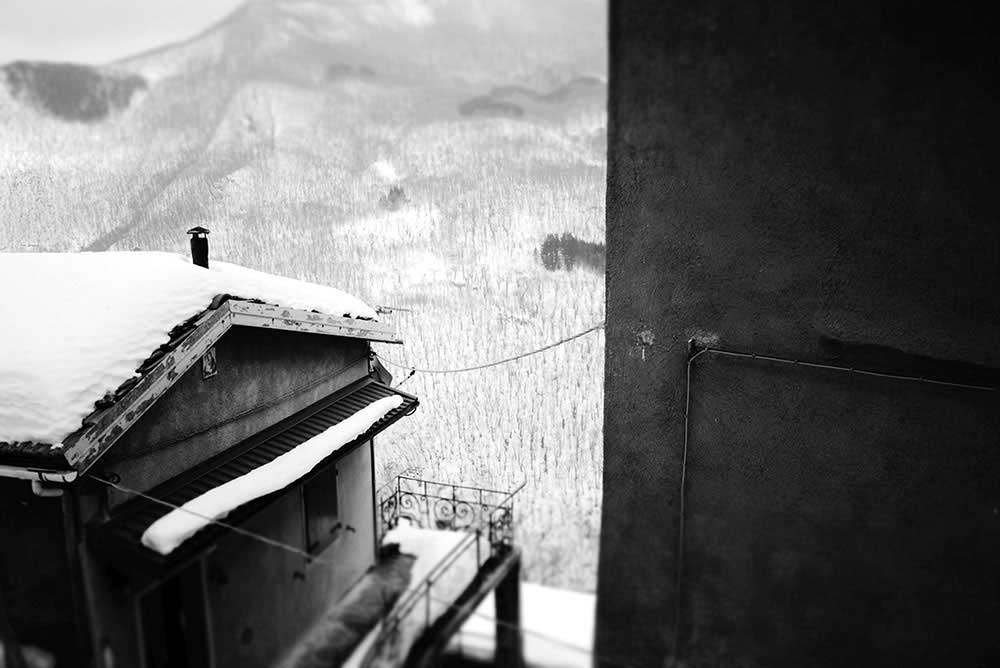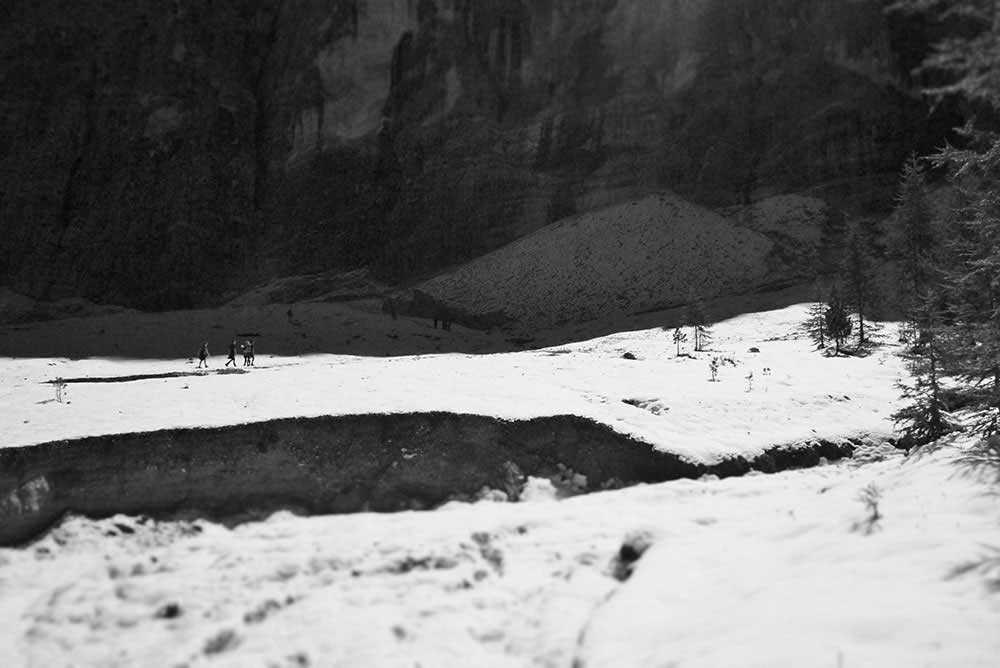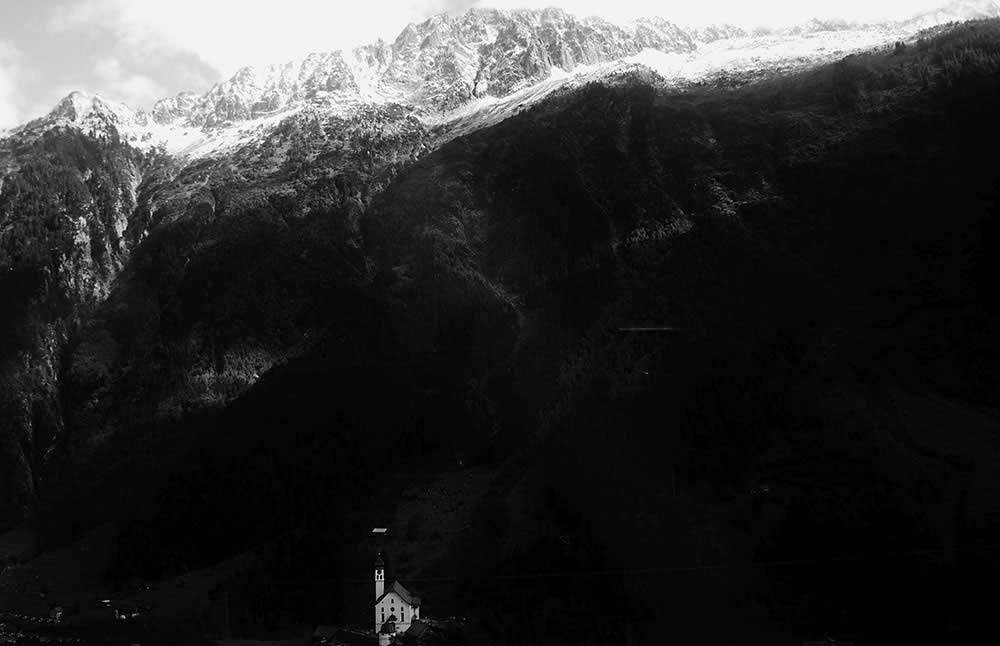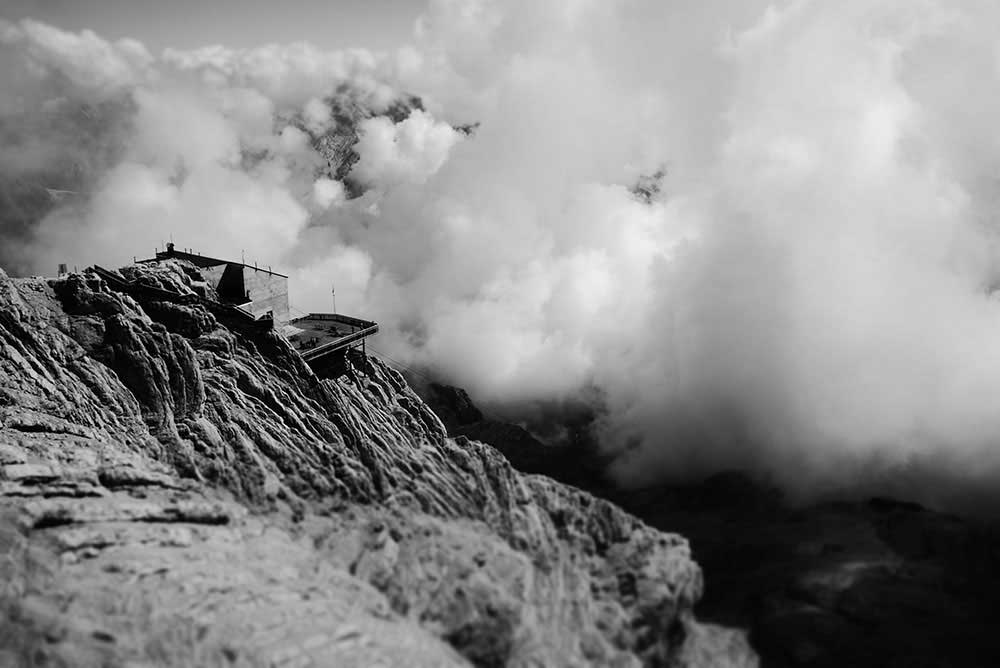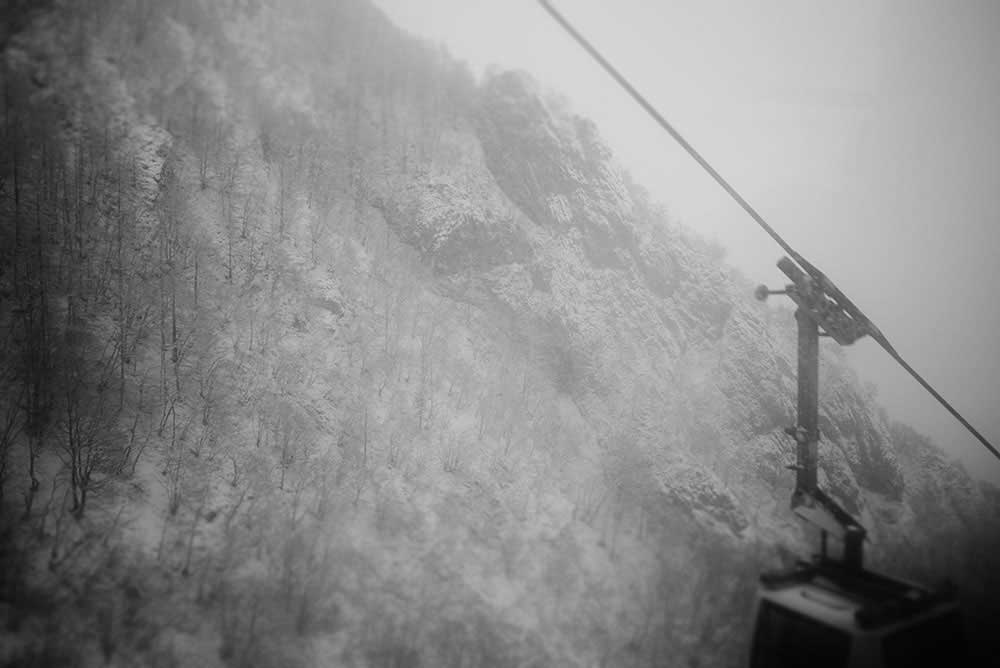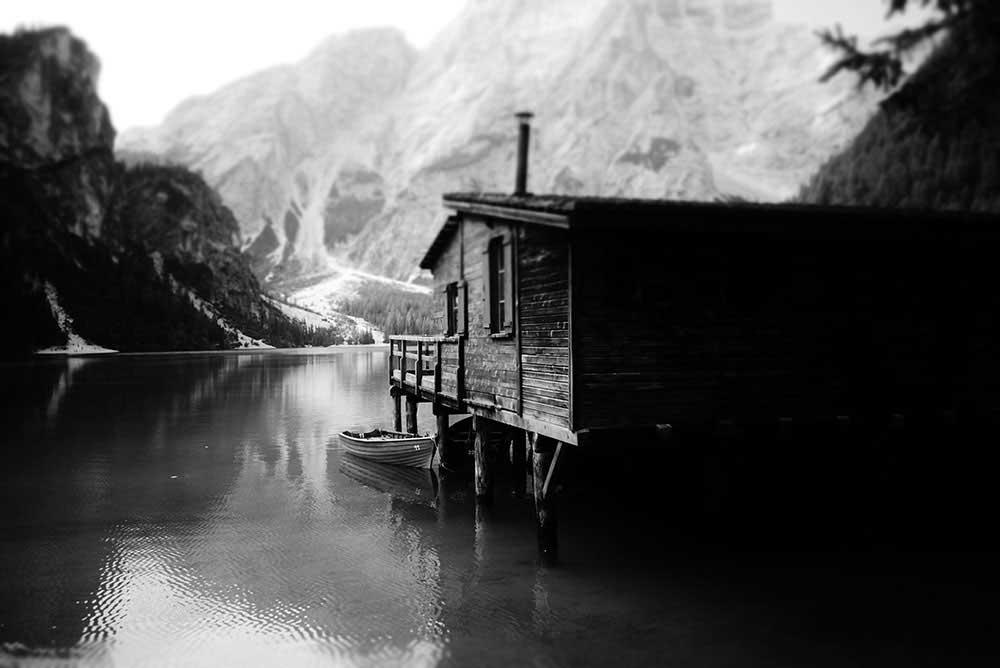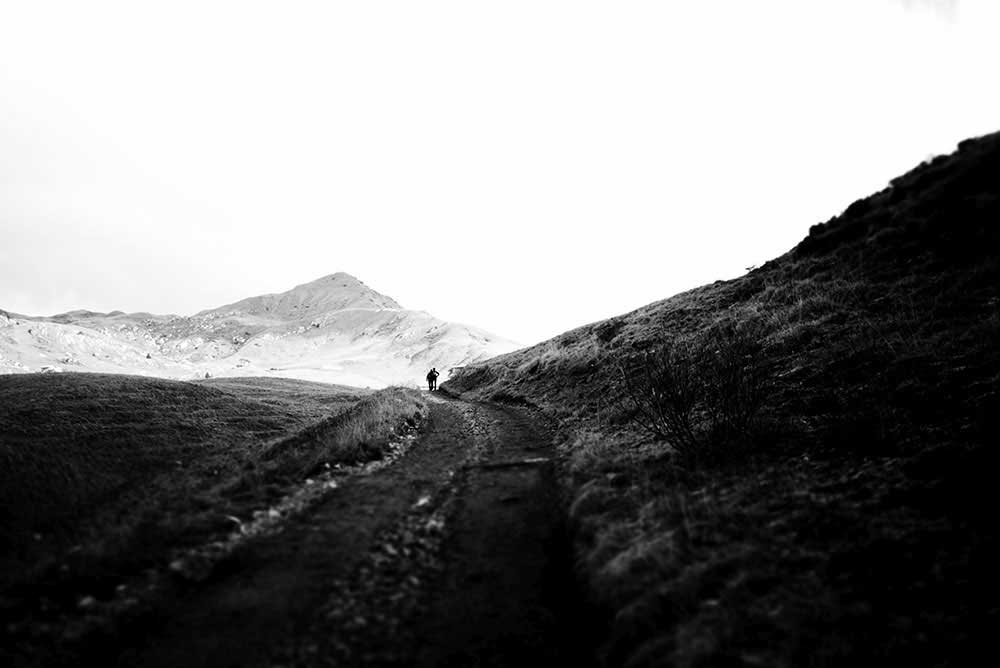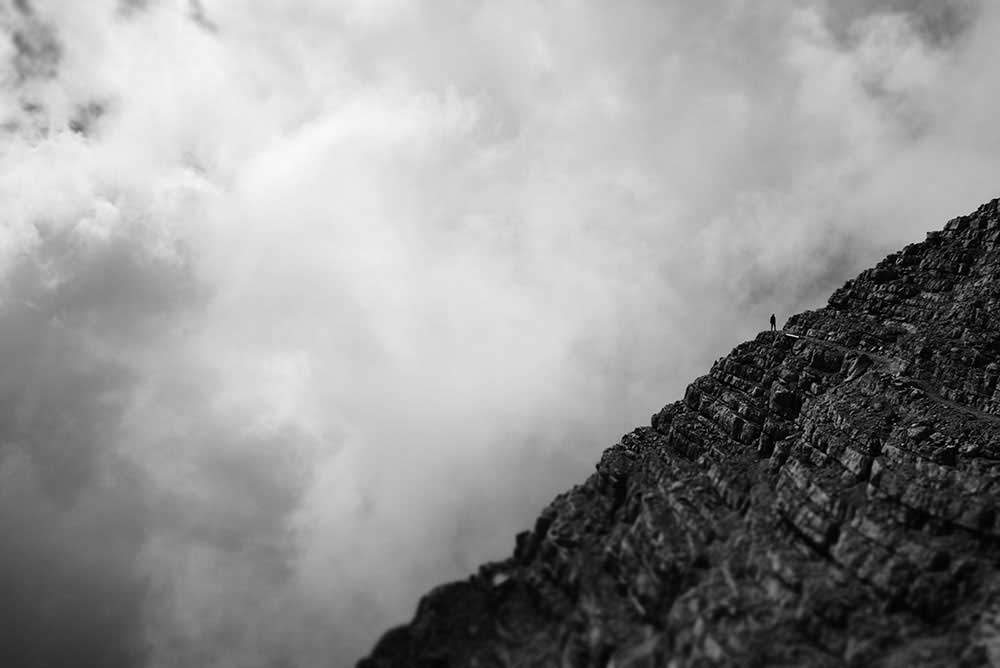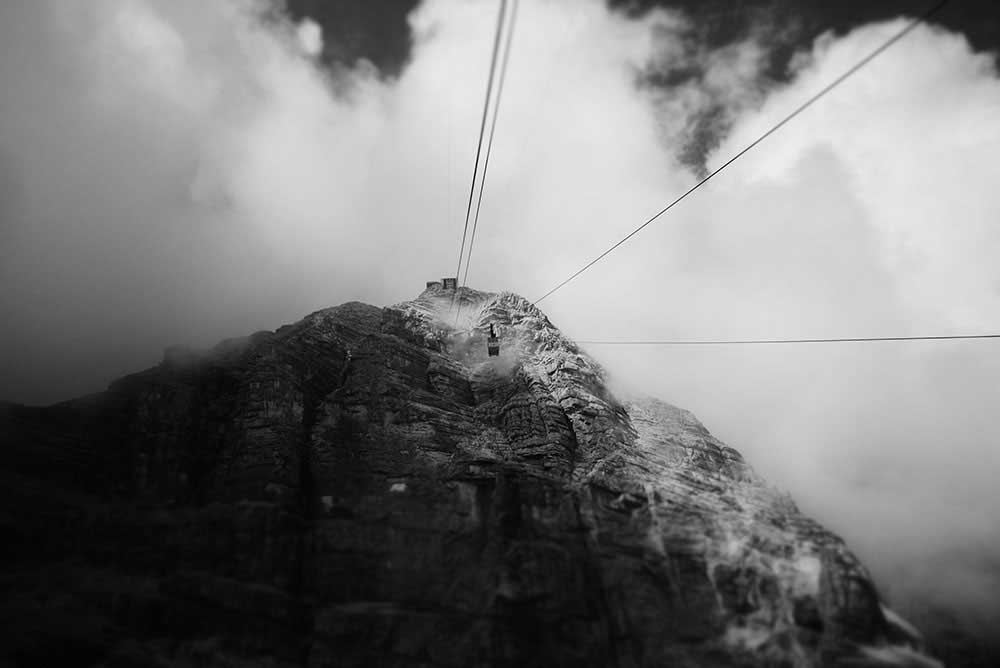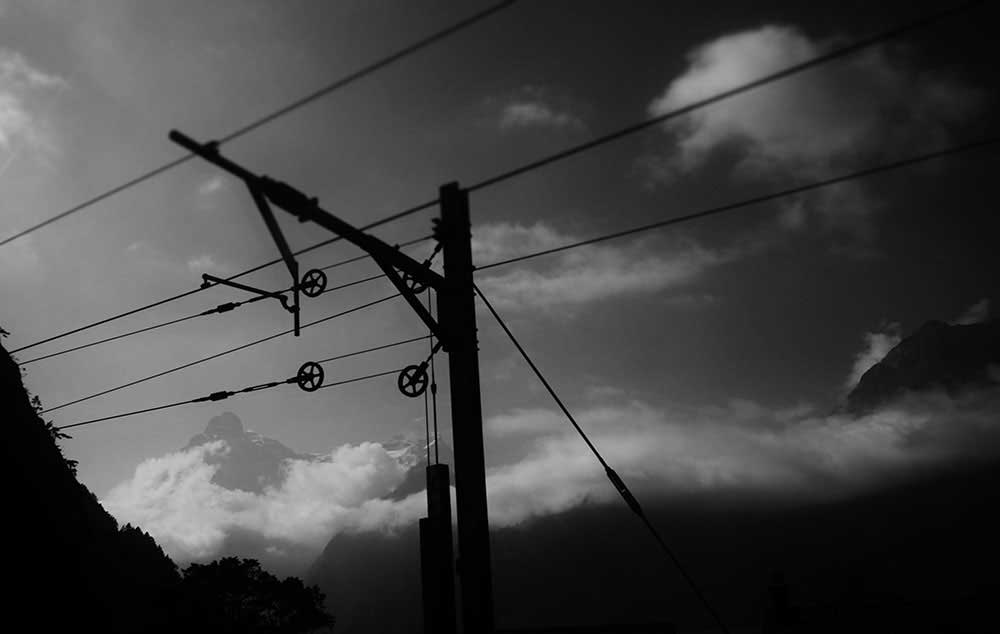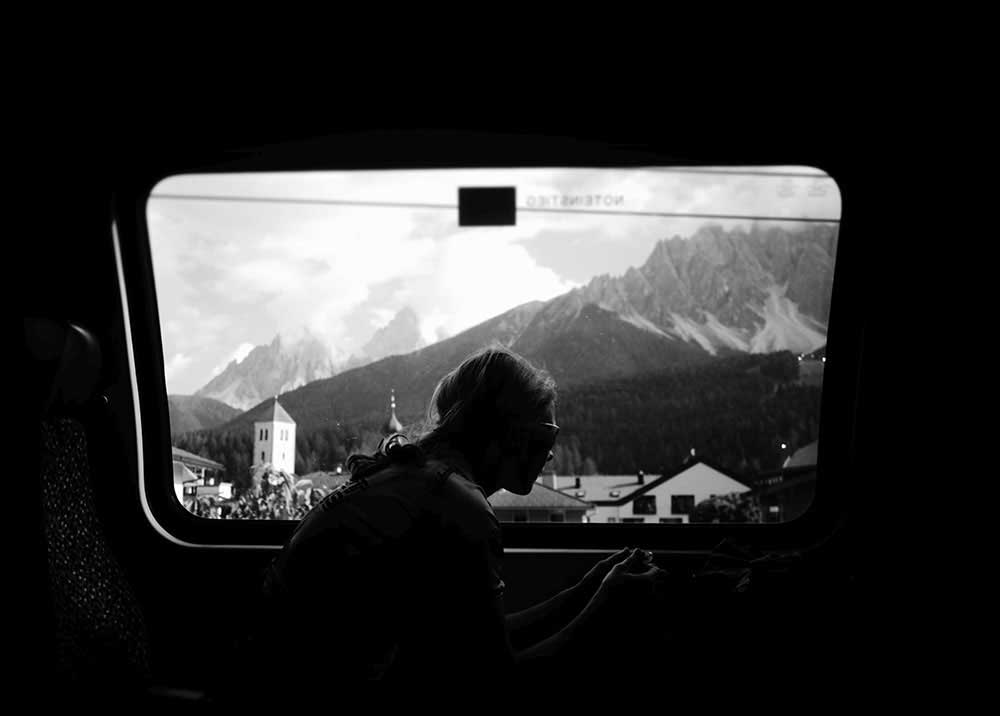Mountains explores natural elevations not as a conquest of extreme sites, but as a silent trajectory taking the viewer to discover textures and slow movements, but also pauses, illusory moments in which clouds, trees, and rocks do not move.
Here the main challenge was to limit the powerful visual inclusiveness of landscape photography to its opposite, a directed view into forms that are only indexes of something bigger and invisible.
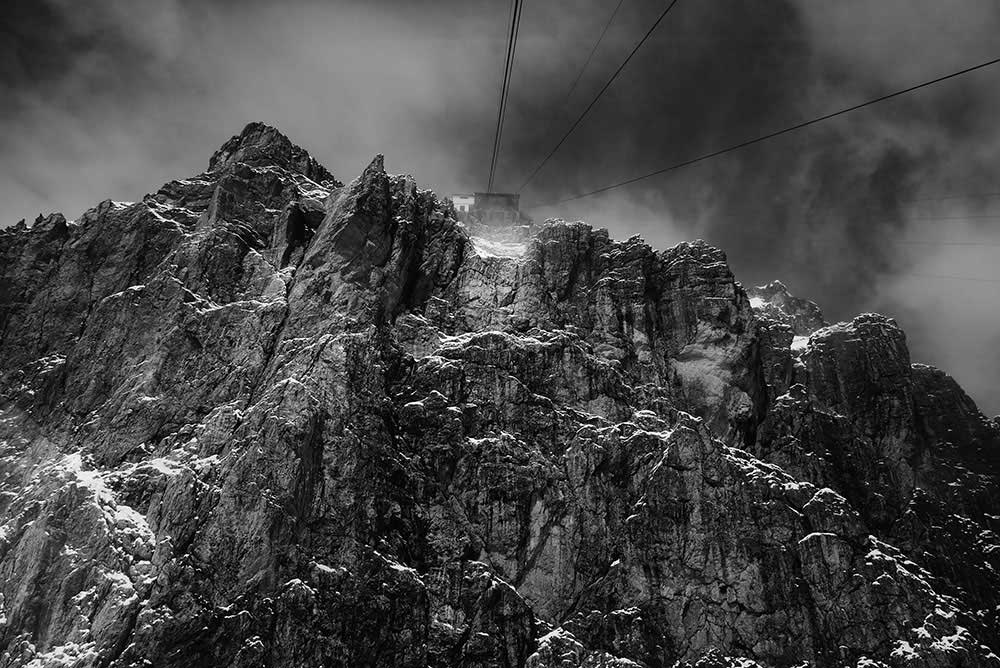
Thus, the first task of such a journey was to look for portraits of subjects and mountains together; sometimes juxtaposed to each other, sometimes one lost into the other. No scale, or comparative constructions, can render the relationship between a human being and mountains, but an humble depiction of someone in nature successfully shows how our bodies are microscopic forms coming from the same matrix giving life to peaks and forests. When walking, climbing, or being reflected into a mountain lake, we, like animals, fit into this magical space without the rush to arrive, to mark our presence at the end of a line.
The second task was to describe these natural formations through rituals made up by manmade structures, such as for example a train line or a cableway, which by cyclically traversing nature vertically or horizontally, they become non-conceptual means to understand mountains. In the same fashion, houses and refuges on mountains become the mark of the basic relationship we have to establish with the natural environment: we need shelter, we need to survive in order to look at mountains.
Mountains is a photographic journey made in the Alps, with a brief excursion on the northern Apennines. In particular, from West to East: the Bernese Alps, the Orobie in Lombardy, and the Dolomites with the Tofana peak and Lake Braies in the Veneto region.
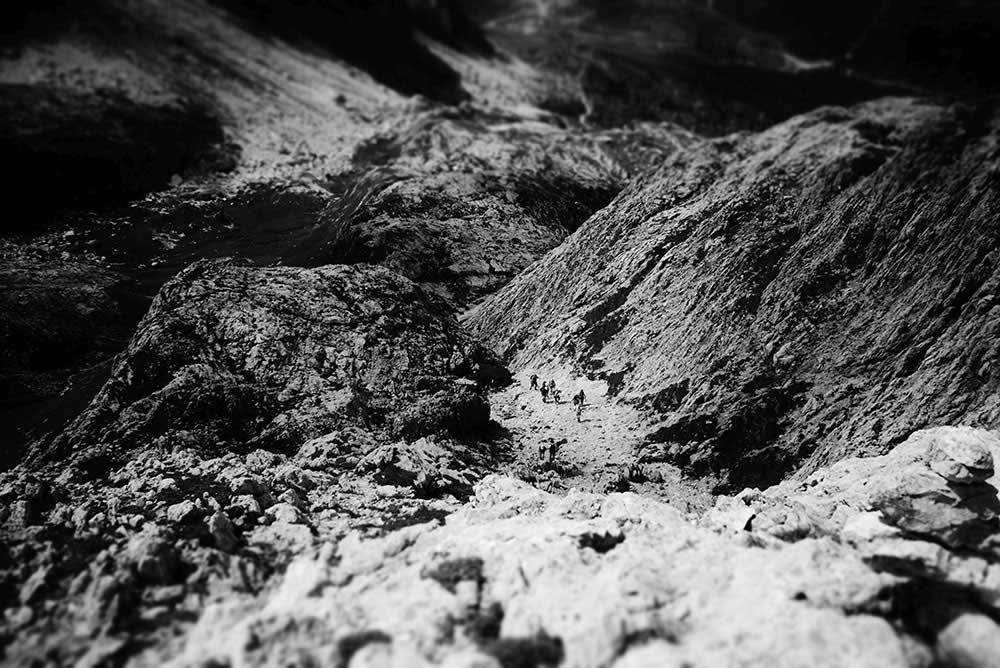
About Marco Musillo
Marco Musillo was bon in Italy in 1972. He holds a PhD in art history from the University of East Anglia (UK), in early modern and modern Italian and Chinese art, critical theory, and spectatorship. Musillo’s photographic explorations focus on shifting perspectives: visual transformations of natural landscapes, the life of spaces of display, and the photographic image of civic cultures. Among his photographic projects: “The Encyclopedic Palace – Venice Biennale 2013” for the Los Angeles Review of Books; the exhibition “Streets Under the Light from Inside the city” in Budapest, during Urban Photo Awards; and the participation in the volume Flowing City published by Exhibit Around in 2018.
